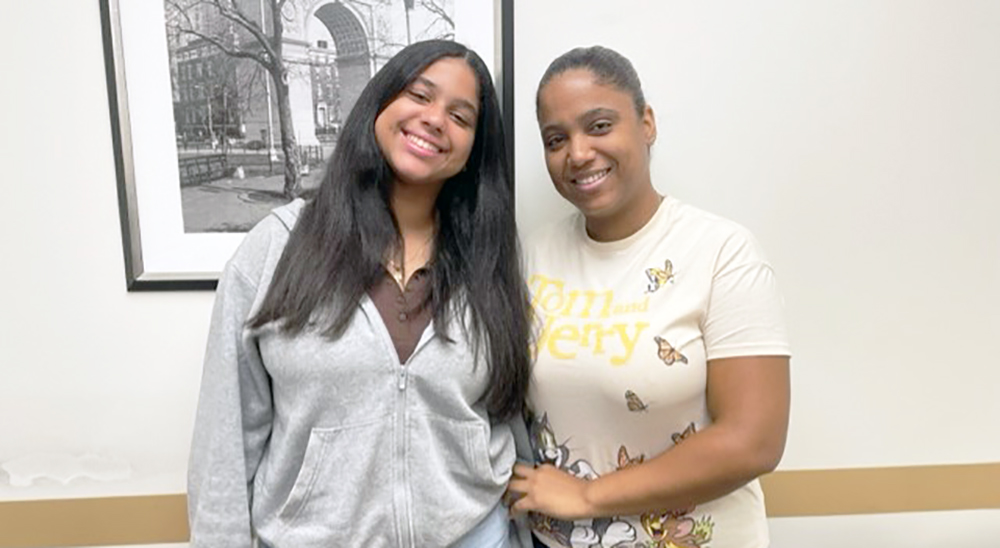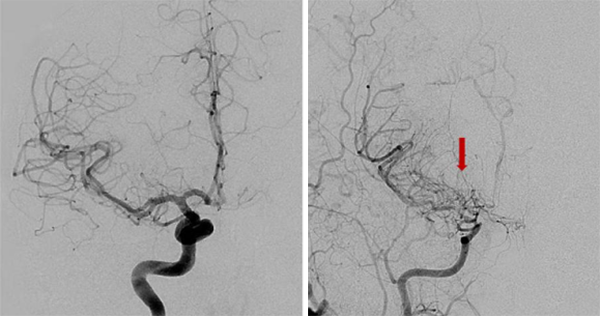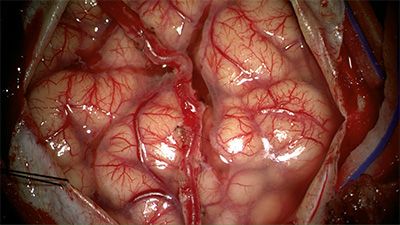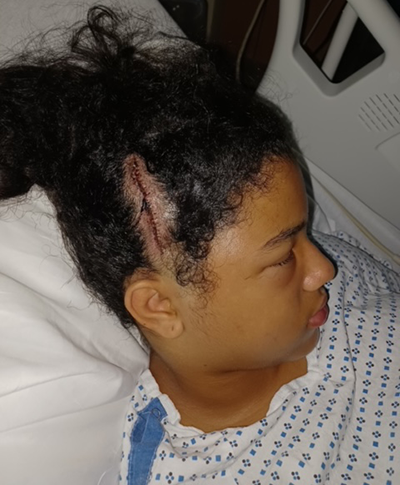
[Read this story in Spanish/Leer en Espanol]
Jennifer Dipiton Alcantara was only 10 years old when she started feeling strange. Her left side felt vaguely numb, with very little strength and a bit of a “twitchy” feeling. It came on gradually, until one day she fell on her way to school. Suddenly her mom, China, realized that something was really wrong with her little girl.
“I couldn’t play sports, I couldn’t dance, I couldn’t do any of the things I did for fun,” Jennifer, now 13, recalls. “Worst of all, I used to love playing with my baby cousin, but my aunt wouldn’t let me hold her anymore since she was afraid I’d drop her. I felt so bad about myself!”
China took Jennifer to her pediatrician, who suspected a neurological issue and referred her to Dr. Maria Duran-Soriano, a pediatric neurologist at NewYork-Presbyterian Queens. Like Jennifer’s family, Dr. Duran-Soriano is from the Dominican Republic, so they shared a common language and China felt comfortable with her; that certainly helped when an MRI scan revealed a surprising diagnosis. Jennifer had Moyamoya disease, a rare anomaly of the blood vessels of the brain. The condition is most commonly found in Asian ethnicities, but it is increasingly being seen in Caucasians, African Americans, and Latinos. It occurs most commonly in children — it is likely present at birth and begins to cause symptoms as the condition worsens.
In those with Moyamoya, the flow of blood to the brain is restricted by narrowed arteries at the skull base. The body tries to develop more small blood vessels to compensate for the blockage, which results in a tangle of vessels that’s still not sufficient to get blood to the entire brain. (The small vessels in that tangle look like a cloud on imaging tests, which is where the condition’s name comes from. "Moyamoya" means "puff of smoke" in Japanese.) The disruption in blood flow leads to the kinds of symptoms Jennifer was experiencing — numbness and weakness — and can eventually cause seizures, vision problems, and cognitive impairment. The only treatment for Moyamoya disease is surgical repair.

In a healthy brain (left) blood flow is unobstructed; in a patient with Moyamoya (right), the red arrow shows the characteristic "puff of smoke" appearance of the irregular blood vessels.
China still gets emotional when she talks about it. For any parent, facing a child’s serious diagnosis is distressing enough; finding out your little girl needs brain surgery can be shattering. Dr. Duran-Soriano explained Moyamoya to her and recommended she take Jennifer to see Dr. Mark Souweidane, a leading expert in pediatric neurosurgery who has special expertise in Moyamoya.
Dr. Souweidane confirmed what the neurologist had told her: surgery was the best option for getting Jennifer well again.
“Moyamoya causes stroke-like symptoms, and those symptoms can be induced by exertion, or when under stress,” Dr. Souweidane explains. “When a child is dehydrated, for example, blood flow through the small vessels is compromised. If that causes the child to experience stroke symptoms, the damage may sometimes be irreversible. Jennifer’s tests showed she had already had two transient ischemic attacks (TIAs), fortunately with only temporary symptoms. The next time, the damage might not be transient. It was clear to me that Jennifer needed surgery.”
“I felt like I had to be strong for my mom. I felt like I was the mom, trying to be strong for her!”
“I didn’t really understand Moyamoya at all,” says Jennifer. “Dr. Souweidane said I had probably always had it, and that it was just growing now that I was older. I guess I was so calm about it because I really didn’t understand it!”
China, on the other hand, understood all too well that her little girl needed brain surgery — and she was not at all sure she wanted to agree to it. Unlike Dr. Duran-Soriano, with whom she shared a cultural bond, Dr. Souweidane was a stranger who did not speak Spanish, and who was explaining everything to her through an interpreter.
“There was a language barrier, and I could see China didn’t trust me yet,” says Dr. Souweidane. “But we treat patients here from all over the world, and we have an excellent real-time translation service. It took some understandable coaxing to get her to see how necessary it was to do the surgery. I’m a parent myself and every time I talk to parents about their children I imagine myself on the other side of the desk. I can only imagine how difficult it is to hear that your child needs brain surgery, especially when you’re hearing it through an interpreter. But I was confident that this was the right solution for Jennifer, so I did my best to win her over.”
As terrifying as the prospect of surgery was, China began to develop faith in Dr. Souweidane. “If that’s what he thought was best,” she says she finally decided, “we would do it.” To protect Jennifer, she didn’t tell her right away that she was going to have surgery, waiting until just before the big day to let her know. Little did she know that Jennifer was handling it better than she was.
“I felt like I had to be strong for my mom,” she recalls. “I didn’t want to cry in front of her, because I knew she was scared. I felt like I was the mom, trying to be strong for her!”
Dr. Souweidane explained how the surgery would work to repair the anomaly in Jennifer’s brain, and how it would allow her to be a child again — returning to dancing, holding her baby cousin, and participating in fun activities again.

Indirect bypass surgery for Moyamoya disease involves using a superficial temporal artery (STA) graft to revascularize the brain.
“In Moyamoya surgery, we take a normal scalp artery and place it on the surface of the brain,” Dr. Souweidane explains. “Over time, that donor artery will lay down roots into the brain surface to supply blood to it — we call that ‘arborizing,’ because it’s like a tree spreading its roots. In the weeks and months after surgery, the new blood vessels take over and relieve the demand on the too-small vessels of the abnormality of Moyamoya — it’s an indirect bypass of the condition that relieves the symptoms and reduces the risk of stroke.”
On the day of the surgery, China and Jennifer’s dad waited for several hours while Dr. Souweidane operated on their daughter. China remembers feeling so worried, so anxious the entire time, but she relied on her faith — in God and in Dr. Souweidane — to get her through.
Jennifer mostly remembers feeling cold when she first woke up, and just wanting her parents. She was very happy that her father was there that day, and she felt much better once both parents were at her bedside in recovery. She was especially happy to hear that her older sister had given birth to twins that same day. “Now we’ll always remember the day of my surgery!” she exclaims. “It will always be a special day because I had my surgery and got a new niece and nephew the same day.”

Jennifer recovering in the hospital right after her surgery. Her long hair now covers the surgical scar but she is still self-conscious about it.
Typical for a teenager, Jennifer’s concern immediately after surgery was the scar, and the section of her scalp that had been shaved. Her long hair covers it, but she remains self-conscious about it (especially when her mom tells people her story and asks her to show it).
China has a different take on things, more grateful for her daughter’s return to health than she is worried about a scar. “She has changed a lot since the surgery,” China says of Jennifer now, “she has gotten so much better!”
Jennifer confirms that she feels better — not only physically, but emotionally. “I used to feel so worthless,” she says now. “I couldn’t do anything, I was dropping everything, and I felt so bad about myself.” Once she was in Dr. Souweidane’s hands, though, she says she knew everything was going to be fine. Today she has more confidence, and she reminds herself (and her mom) of how her initial fear and skepticism have turned positive.
“The change in Jennifer was amazing to see,” says Dr. Souweidane, “but the change in China was perhaps even more remarkable. By the time it was all over, and she could see for herself the benefits of the surgery, she transitioned from fear and distrust to total joy. Unlike our first appointments, in our meetings after the surgery I saw a total emotional change, with tears of appreciation and joy as she had a healthy child again.”
China advises other parents to try to not lose hope, and to be sources of strength for their child about to have brain surgery. She counts herself and her family lucky to have found Dr. Souweidane. “He is so nice and outgoing,” she says now, “and I just love him. After God, I trust the doctor.”